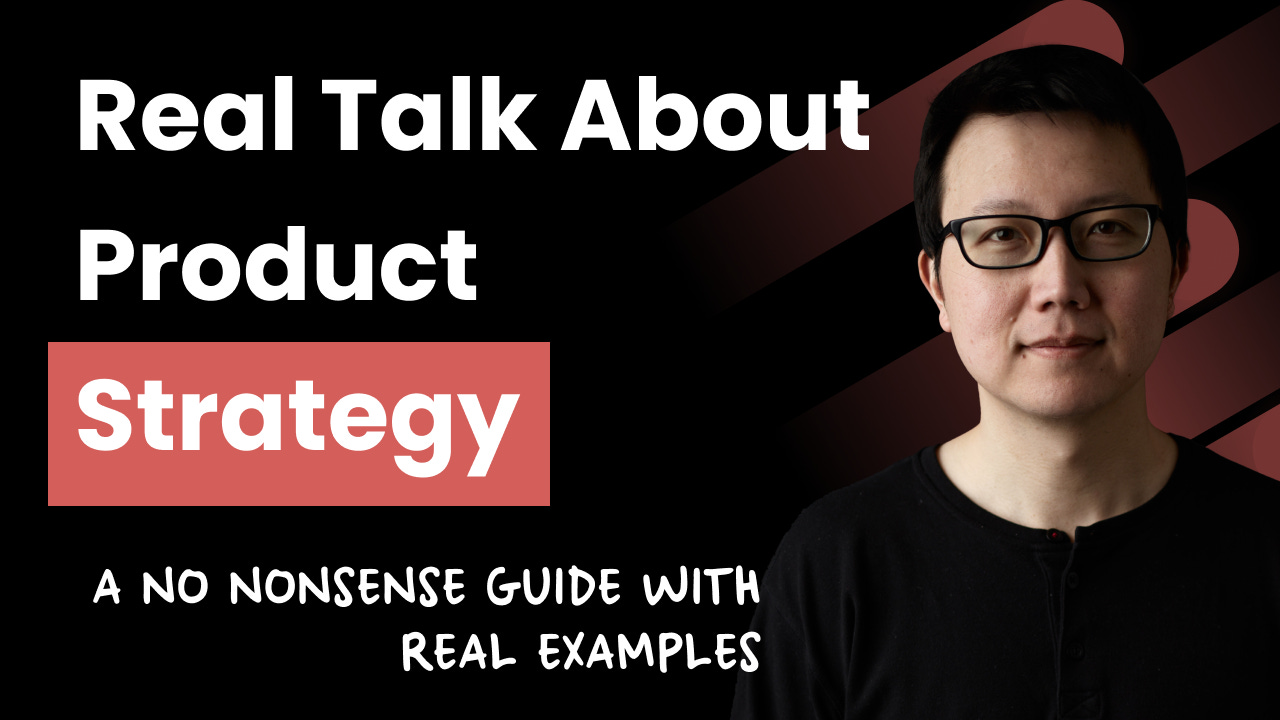Let's Have Some Real Talk About Product Strategy
A no-nonsense guide that anyone can follow to create a great product strategy with real examples from Costco, Meta, and more
Dear subscribers,
Today, I want to share some real talk about product strategy.
“Strategy” has become a vague term that people use to sound smart, create slides out of thin air, and gatekeep others for “not being strategic enough.”
But strategy is important and anyone can learn to be strategic. So let’s cover:
What isn’t a strategy
Three components of a great strategy
Examples of great strategies from Costco, Meta, Tesla, and more
What isn’t a strategy
Strategy isn’t:
Checking all the boxes
A list of goals and aspirations
More important than delivering great products
Here’s a quick rant about each point:
1. Strategy isn’t checking all the boxes
Tell me if you’ve seen this framework before:
Many product teams have been trained to check these boxes from top to bottom:
Mission: Change you'll bring to the world.
Vision: World after the mission is achieved.
Values: Principles to guide your decisions.
Strategy: Plan to achieve the mission and win.
Goals: How you’ll measure success.
Roadmap: How you’ll implement the strategy.
But the problem is:
Checking boxes isn’t a strategy.
This is especially true when people check these boxes out of thin air without truly understanding their customers' needs or their company's durables advantages.
2. Strategy isn’t a list of goals and aspirations
Here’s a leaked list of Google’s 2024 goals:
Let’s assume that Google has also created OKRs for each of these goals (e.g., “drive Google Gemini DAU to 100M”). But the fact remains that:
A list of OKRs isn’t a strategy.
If I had an OKR to “lose 10 pounds this summer” but my strategy didn’t include improving my diet, then I’d fail miserably. To bring this point home, here’s a great excerpt from Professor Richard Rumelt:
Someone asked: “But where is the strategy?”
“What do you mean?” I questioned back.
“Well, three years ago, we had a strategy about what we wanted to do.”
“You mean this?” I asked, pointing to a paper document.
“Yes, that,” he said.
I moved over to the document with my red marker in hand. I read each of the ten lines aloud and asked the group whether that objective had been met.
“Did you continue to lead the industry, as it says on line one?” I asked. No, because market share had been lost. I put a red X next to the line.
“Did you maintain the highest safety standards?” Yes, checkmark.
“Did you increase profitability?” No, a red X.
“Did you penetrate the Chinese market?” Not really, a red X.
“Did you maintain high employee morale?” No we laid off 15%. Red X.
“Did you dramatically reduce carbon-based energy usage?” Red X.
When I stopped, there were mostly red Xs.
“Is this the kind of strategy you want to again publish?” I asked. “A document full of pious objectives few of which will be met in the next three years?”
3. Strategy isn’t more important than delivering great products
When I talk to talented junior PMs, they often say: “I can execute but what I’d love to focus on is vision and strategy.” So let me reiterate a controversial quote from my interview with Kaz Nejatian (COO Shopify):
No one ever asks in a Shopify product review: “What’s the strategy of this?” Strategy is the least meaningful aspect of whether a product is great or not.
A strategy is only meaningful if it can help you make decisions to ship great products. But I often see PMs at large companies spend 90% of their time prepping strategy decks for directors → VPs → SVPs while neglecting the product that their customers actually use.
Don’t spend so much time planning for the future that you ignore what customers use today.
To make this real:
Suppose you have a product launch and a big exec review next week. You only have time to polish the product or your slide deck — which one will you prioritize?
The obvious answer is to push back the exec review, right? But in reality, incentives will often lead PMs to focus on exec reviews instead of product quality because execs control promotions, not customers.
Of course, a company with great execs will actively discourage this behavior. But sadly, that’s not the case at many companies.
Three components of a great strategy
So how do you craft a great strategy? I’m not a strategy guru (I think “gurus” are part of the problem actually), but to me, a great strategy has 3 key components:






